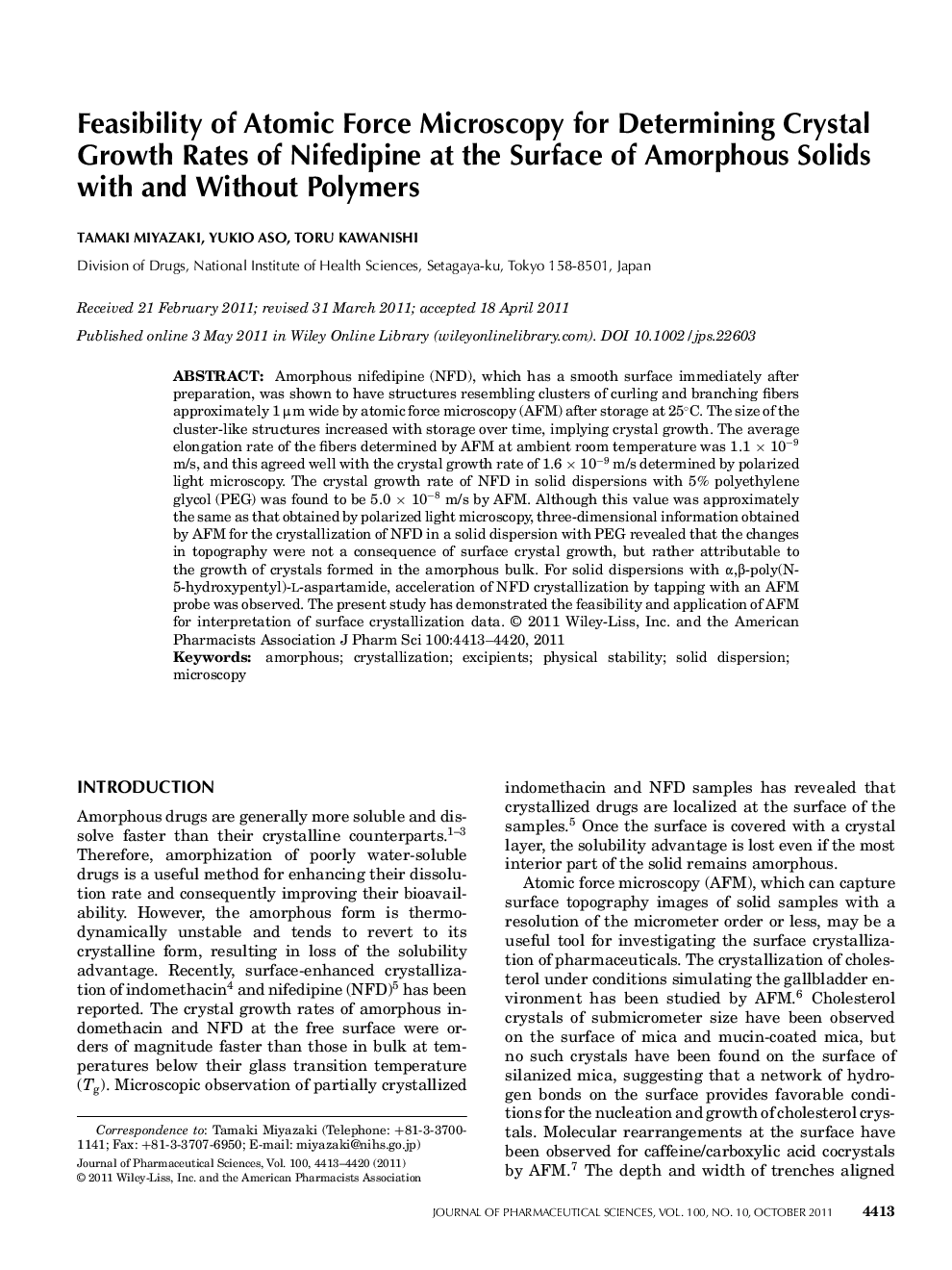| Article ID | Journal | Published Year | Pages | File Type |
|---|---|---|---|---|
| 2485283 | Journal of Pharmaceutical Sciences | 2011 | 8 Pages |
Abstract
Amorphous nifedipine (NFD), which has a smooth surface immediately after preparation, was shown to have structures resembling clusters of curling and branching fibers approximately 1 μm wide by atomic force microscopy (AFM) after storage at 25°C. The size of the clusterâlike structures increased with storage over time, implying crystal growth. The average elongation rate of the fibers determined by AFM at ambient room temperature was 1.1 à 10â9 m/s, and this agreed well with the crystal growth rate of 1.6 à 10â9 m/s determined by polarized light microscopy. The crystal growth rate of NFD in solid dispersions with 5% polyethylene glycol (PEG) was found to be 5.0 à 10â8 m/s by AFM. Although this value was approximately the same as that obtained by polarized light microscopy, threeâdimensional information obtained by AFM for the crystallization of NFD in a solid dispersion with PEG revealed that the changes in topography were not a consequence of surface crystal growth, but rather attributable to the growth of crystals formed in the amorphous bulk. For solid dispersions with α,βâpoly(Nâ5âhydroxypentyl)âlâaspartamide, acceleration of NFD crystallization by tapping with an AFM probe was observed. The present study has demonstrated the feasibility and application of AFM for interpretation of surface crystallization data. © 2011 WileyâLiss, Inc. and the American Pharmacists Association J Pharm Sci 100:4413-4420, 2011
Related Topics
Health Sciences
Pharmacology, Toxicology and Pharmaceutical Science
Drug Discovery
Authors
Tamaki Miyazaki, Yukio Aso, Toru Kawanishi,
